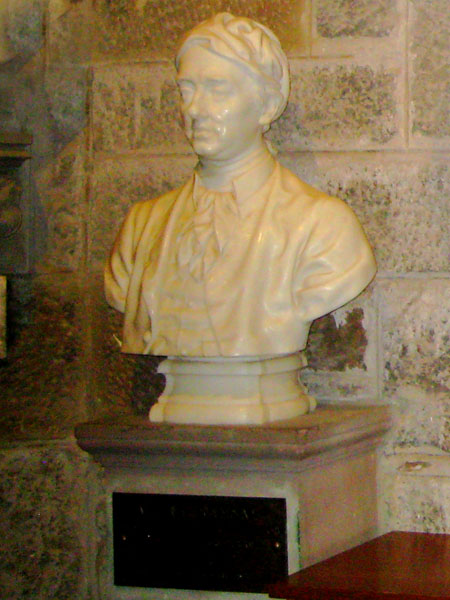 |
|
Born in Leadhills in Lanarkshire, Allan Ramsay began his career as a wig maker. But he also collected and rewrote a large collection of old Scottish songs and ballads which were published in 1724. The following year he published "The Gentle Shepherd" a pastoral collection which gave a vivid description of rural scenery. This would later form the basis of John Gay's "The Beggar's Opera." His success in this field encouraged him to open a number of bookseller's shops and a library at the Luckenbooth in Edinburgh's High Street, one of the first in Britain. Many of the literary figures of the day would congregate there.
He also set up a theatre (which was suppressed by the Edinburgh magistrates) and an auction house. He built a house on Castle Hill, beside Edinburgh Castle - at the current location of Ramsay Gardens, named after him. He died on January 7, 1758. While he is not regarded as a great poet, his vein of "return to nature" had an influence on both Robert Burns and Sir Walter Scott.
The bust in the Hall of Heroes for Ramsay might also refer to his son (and I did not write down the dates on the plaque). Junior was born in Edinburgh and went to London and Rome to study art. Returning to Edinburgh he undertook a number of portrait commissions and became an established artist. He moved to London and soon had a wide number of distinguished clients, including George III, Flora Macdonald (of Bonnie Prince Charlie fame), David Hume, Gibbon and Rousseau. He led the way in a more relaxed style of presenting the subject of a portrait. As the leading portrait painter of the day, he amassed a large fortune and spent some time in Italy before retiring to Dover where he died in 1784.